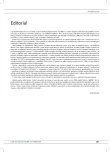An Assessment of Cerebrovascular Reserve Capacity after EC- IC Bypass with TCD
Authors:
M. Sameš 1; R. Bartoš 1; P. Vachata 1; A. Zolal 1; F. Cihlář 2; M. Derner 2; V. Pavlov 2
Authors‘ workplace:
Neurochirurgická klinika, UJEP a Krajská zdravotní a. s., Masarykova nemocnice v Ústí nad Labem, o. z., 2Radiodiagnostické oddělení, Krajská zdravotní a. s., Masarykova nemocnice v Ústí nad Labem, o. z.
1
Published in:
Cesk Slov Neurol N 2009; 72/105(4): 359-363
Category:
Original Paper
Overview
Aim:
To assess the status of cerebrovascular reserve capacity (CVRC) three months after extra-intracranial bypass (EC-IC) when compared to a reference group of hemodynamically non-compromised patients, and to assess the influence of the angiographic level of bypass fulfillment on the resulting CVRC.
Patient group and methods:
In the years 2005 and 2006, 18 EC-IC bypasses were done on patients for hemodynamic ischemia. The basic technique for CVRC testing was a transcranial Doppler test (TCD) of the middle cerebral artery (ACM). The vasomotor load was a mixture of 7.5% CO2 and 92.5% O2; we used the Ringelstein technique for the calculations. The reference group consisted of 12 volunteers. Perfusion CT was used as the correlating test. During hospitalization we correlated bypass flow for TCD and as a standard with DSA. We assessed the angiographic functionality using the Schmiedeke grade of 0–3. Perioperative mortality and significant mortality was non-existent.
Results:
DSA done early after the operation confirmed flow of all the bypasses; 3 patients (17%) achieved the first grade, 5 patients achieved the second grade (28%) and 10 patients achieved grade 3 (56%). The average percentage of Vmean ACM growth was 36% compared to 10% before the operation. The median of increase in Vmean ACM upon inhalation of CO2 in grade 1 bypasses was 39% with an SD of 9.6; grade 2 bypasses demonstrated an increase of 29% with an SD of 24.4, while a 29% increase and an SD of 11.8 was demonstrated with grade 3. There was no statistically significant difference in Vmean ACM upon inhalation of CO2 for individual levels of angiographic achievement of bypasses (p = 0.88). Those patients who were assessed early-on as grade 1 had the DSA repeated a year later; all of these patients experienced an increase in flow and a shift to grade 3.
Conclusion:
EC-IC bypass restores CVRC with a very low rate of morbidity and mortality. The primary level of angiographic achievement of bypass is not definitive. A bypass increases flow in relation to perfusion demands.
Key words:
EC-IC bypass – transcranial Doppler sonography
Sources
1. Yasargil MG. Anastomosis between the superfici al temporal artery and a branch of the middle cerebral artery. In: Yasargil MG (ed). Microsurgery Appli ed to Ne urosurgery. Stuttgart: Ge orge Thi eme Verlag 1969 : 105 – 115.
2. Donaghy RM, Yasargil MG. Micro angei onal surgery and its techniques. Prog Brain Res 1968; 30 : 263 – 267.
3. The EC/ IC Bypass study Gro up. Failure of extracrani al - intracrani al arteri al bypass to reduce the risk of ischemic stroke. Results of an internati onal randomized tri al. N Engl J Med 1985; 313(19): 1191 – 1200.
4. Schmi edek P, Pi epgras A, Leinsinger G, Kirsch CM, Einhüpl K. Improvement of cerebrovascular reserve capacity by EC‑IC arteri al bypass in pati ents with ICA occlusi on and hemodynamic ischemi a. J Ne urosurg 1994; 81(2): 236 – 244.
5. Anderson DE, McLane MP, Reichman OH, Origitano TC. Improved cerebral blo od flow and CO2 re activity after microvascular anastomosis in pati ents at high risk for recurrent stroke. Ne urosurgery 1992; 31(1): 26 – 34.
6. Ringelstein EB, Si evers C, Ecker S, Schneider P, Otis SM. Nonivasive assessment of CO2‑induced cerebral vasomotor response in normal individu als and pati ents with internal carotid artery occlusi ons. Stroke 1988; 19(8), 963 – 969.
7. Ringelstein EB, Van Eyck S, Mertens I. Evalu ati on of cerebral vasomotor re activity by vari o us vasodilatating stimuli: comparison of CO2 to acetazolamide. J Cereb Blo od Flow Metab 1992; 12(1): 162 – 168.
8. Widder B, Kleiser B, Krapf H. Co urse of cerebrovascular re activity in pati ents with carotid artery occlusi ons. Stroke 1994; 25(10): 1963 – 1967.
9. Verni eri F, Pasqu aletti P, Matteis M, Passarelli F, Tro isi E,Rossini PM et al. Effect of collateral blo od flow and cerebral vasomotor re activity on the o utcome of carotid artery occlusi on. Stroke 2001; 32(7): 1552 – 1558.
10. Karnik R, Valentin A, Ammerer HP, Donath P, Slany J.Evalu ati on of vasomotor re activity by transcrani al Doppler and acetazolamide test before and after extracrani al - intracrani al bypass in pati ents with internal carotid artery occlusi on. Stroke 1992; 23(6): 812 – 817.
11. Iwama T, Hashimoto N, Takagi Y, Tsukahara T, Hayashida K.. Predictability of extracrani al/ intracrani al bypass functi on: a retrospective study of pati ents with occlusive cerebrovascular dise ase. Ne urosurgery 1997; 40(1): 53 – 59.
Labels
Paediatric neurology Neurosurgery NeurologyArticle was published in
Czech and Slovak Neurology and Neurosurgery

2009 Issue 4
Most read in this issue
- Tumo urs of the Third Cerebral Ventricle
- Acquired Neuromyotonia with Minor Central Symptoms and Antibodies against Voltage- Gated Potassium Channels – a Case Report
- Botulinum Toxin in Spasticity Management
- Paroxysmal Kinesigenic Dyskinesi a – a Case Report of a Yo ung Woman with Alternating Hemidystoni a
